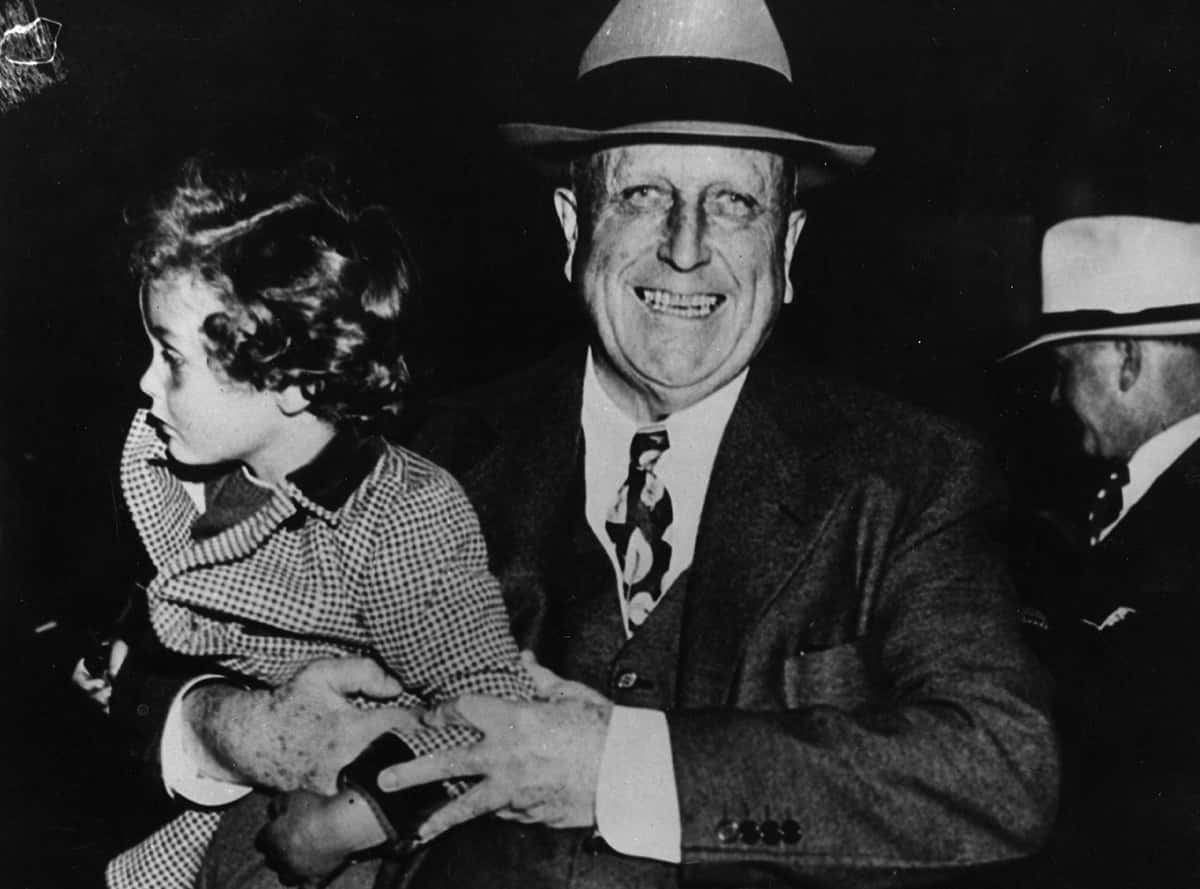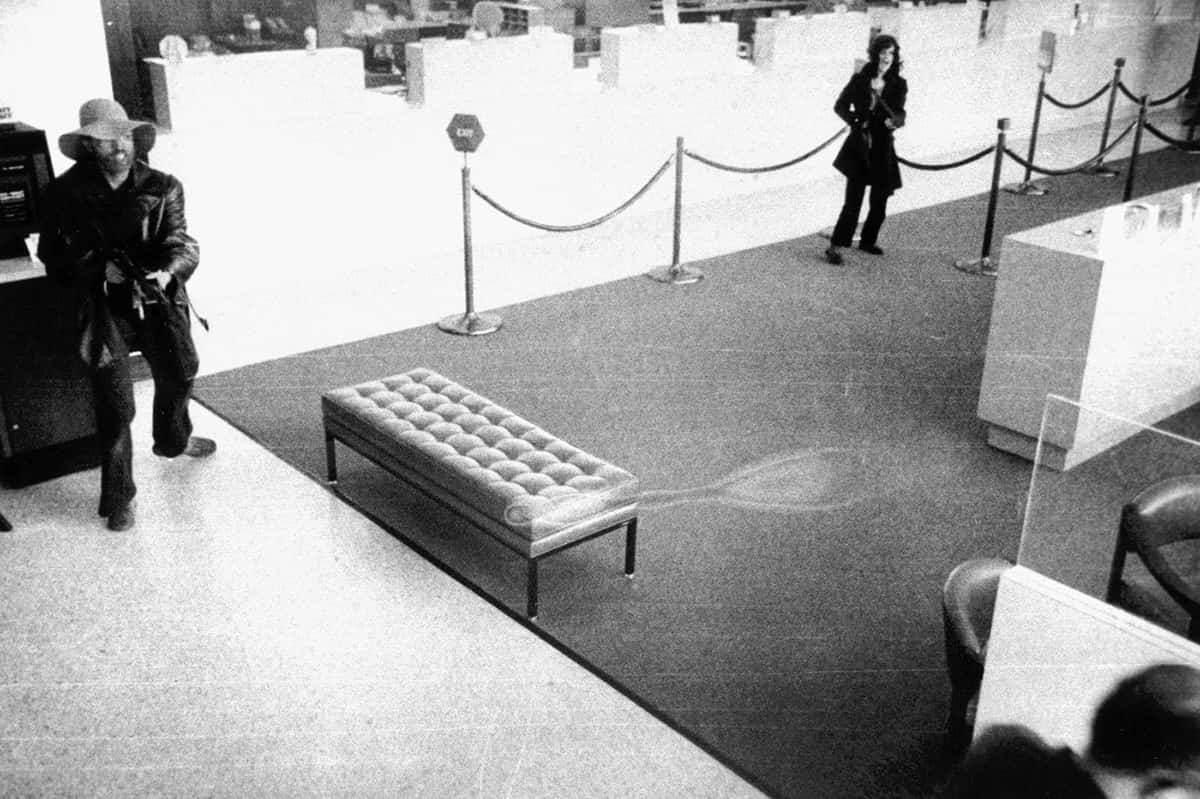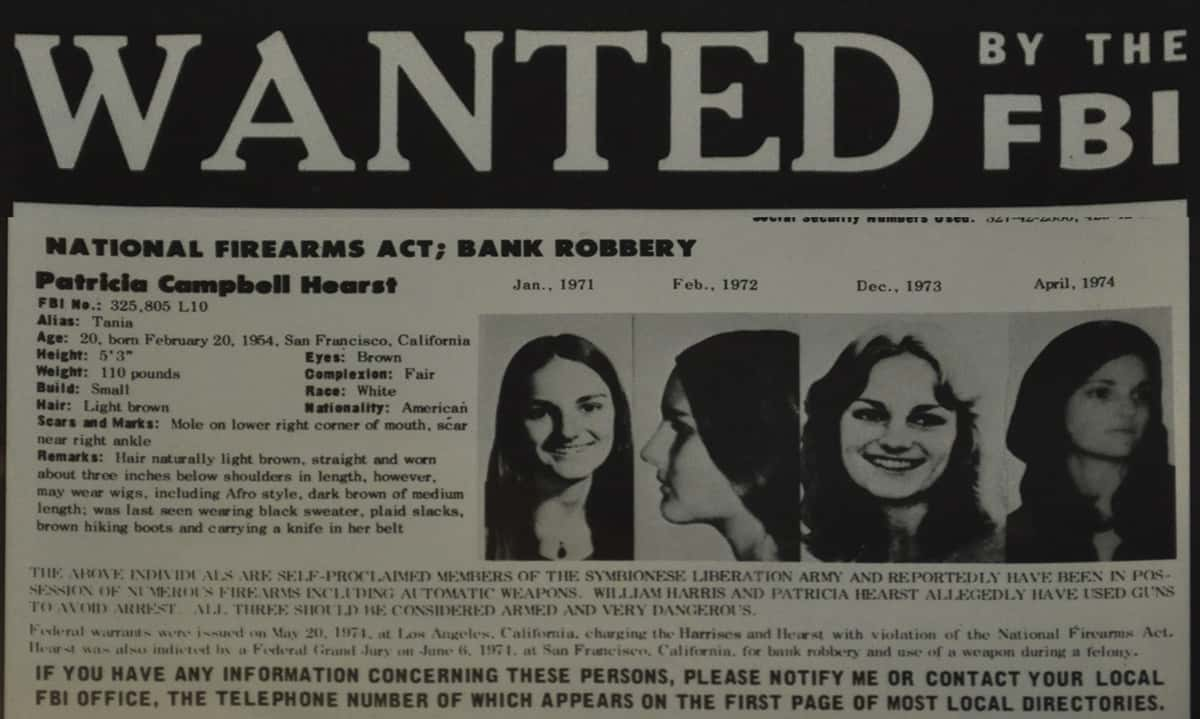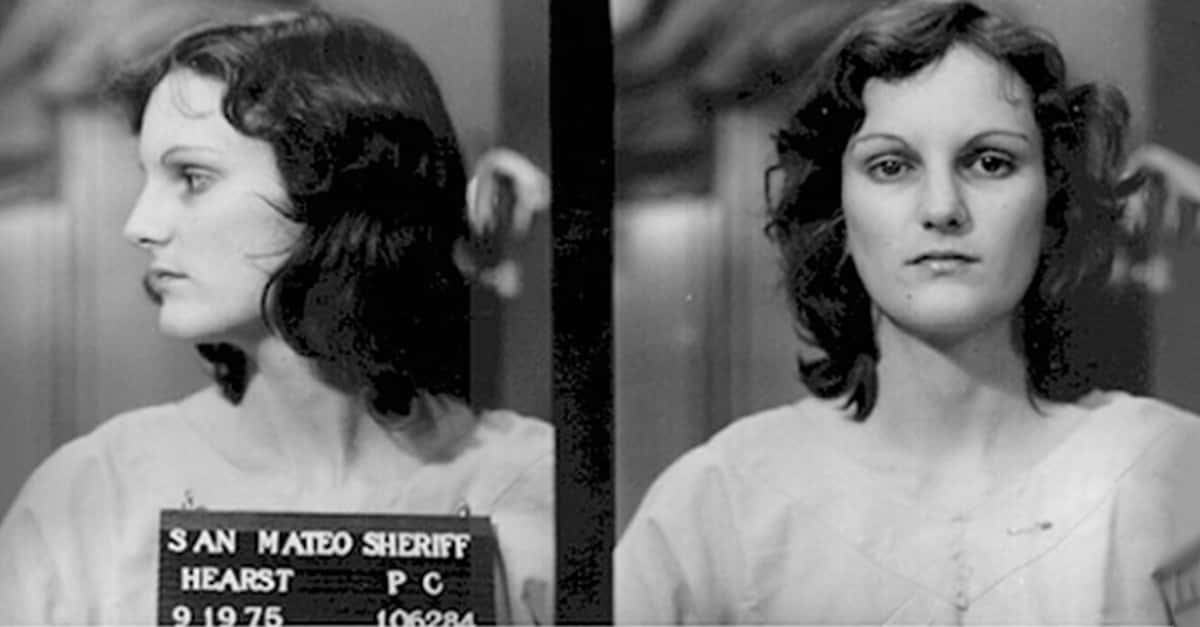On April 16, 1974, a man from San Francisco removed a large sign that said “GOD BLESS YOU PATTY” from his front yard. He, like so many Americans, had been waiting with bated breath for any information about the wealthy heiress who had been so shockingly abducted from her apartment months earlier. But the day before, Hearst had been recorded taking part in a bank robbery, barking out orders at innocent customers while wielding an M1 carbine. She no longer looked like the victim of a brutal crime—she was now an obvious participant in one. Public sympathy evaporated, and the frantic search for her and her captors was about to turn violent.
The group that kidnapped Hearst called themselves the Symbionese Liberation Army (SLA). Its founder, Donald DeFreeze, named it after the word symbiosis, referring to “a body of dissimilar bodies and organisms living in deep and loving harmony and partnership in the best interest of all within the body.” But, despite the claims of loving harmony, they were, in effect, a violent group of domestic terrorists. Based in California’s Bay Area, they sought, above all else, to destroy what they perceived as the corrupt “capitalist state” running—and ruining—the nation.
The first major event that brought the SLA into the news was the murder of an Oakland, California school superintendent named Marcus Foster. Foster, an African American civil servant, had recently unveiled a plan to introduce ID cards into Oakland’s school system, an act which led to the SLA labeling him a “fascist.” Deaf to the fact that Foster was actually against the ID cards, and that he’d actually rolled back earlier initiatives before developing his watered-down proposal, the SLA had decided he would be their target. On November 6, 1973, two SLA members shot Foster and his deputy, Robert Blackburn, with cyanide-filled hollow-point bullets. Blackburn would survive, albeit with grave injuries, while Foster was killed.
While the SLA cheered themselves for striking a blow to the capitalist state, people reacted furiously to Foster’s murder. The public was outraged; even the Black Panthers, with whom the SLA felt a certain revolutionary kinship, called the crime “a brutal and senseless murder.” It turns out that killing an innocent black man was not the way to galvanize support for their cause. The SLA thought they were fighting back against a corrupt system for the good of all people, but they had a serious PR problem on their hands. Then one day, they heard the news that one of newspaper magnate William Randolph Hearst’s granddaughters was getting married, and they had an idea.
 Getty Images William Randolph Hearst
Getty Images William Randolph Hearst
On February 4, 1974, member of the SLA burst through the door of Hearst and her fiance’s apartment, brutally beat them both, and kidnapped the 19-year-old heiress. The group demanded a ransom from her wealthy family in the form of a food distribution program that would help feed Oakland’s poor. This was, perhaps, partially a PR move. After the outrage sparked by Foster’s murder, demanding food for the needy would show the SLA was truly fighting for the people. But, as with all of the SLA’s plans, even this noble goal couldn’t go off as planned: The Hearst family did give out free food to the city’s poor, but they completely underestimated how many people would show up, and the charitable scenes often devolved into violence as hungry crowds mobbed terrified workers who eventually resorted to throwing boxes of food out of moving trucks.
But what of Patty Hearst? While her family was fumbling through a coerced attempt at charity, what was their daughter—the reason for it all—going through?
Immediately after she was abducted, Hearst was taken to a safe house, where she was kept blindfolded in a closet for with her hands bound for over a week. She was beaten, violated, and threatened with death. No one will ever truly know what she was thinking during this time, but eventually, while still blindfolded, she began to join in on the SLA’s political conversations. At one point, she was given a flashlight and SLA writings to read in the closet. Eventually, she told them that she wanted to join their group. She wanted to stay with them and fight against that oppressive system that she and her family represented.
They removed her blindfold, and there was fervor in her eyes. Doubtless, they were wary she would try to escape, but she evidently gave no indication that she would. She took part in their discussions, she did weapons drills every day—she truly seemed to have been brought over to the cause.
After two months of worry, the Hearst family, and the concerned public at large, got their first sign of the missing heiress. The SLA released a tape that featured Patty’s voice, except she announced she now went by Tania—named after revolutionary Che Guevara’s comrade Haydée Tamara Bunke Bider. She also said that she had joined the group’s war against the capitalist state.
Undoubtedly, the public was shocked by the tape, but it was not hard to believe that Hearst had been forced to say such things. But then, she was caught on camera in the bank robbery, looking every bit like Tania, the violent revolutionary. Not long after, another tape was released where she angrily denied that she was brainwashed. She insulted her family and restated that she was, in fact, “a soldier of the people’s army.” She was nothing if not convincing.
After the robbery and the tapes, the Hearst kidnapping case took a stark turn. Willam B. Saxby, the US Attorney General, called Hearst a “common criminal.” After all, the group trusted her enough to bring her along on a bank robbery—they’d even given her a gun! While some people still defended Hearst, in the eyes of the law, she was now a criminal, not a victim, and she would be treated as such.
Not long after the bank robbery, a series of blunders by SLA members ended with the group surrounded by law enforcement at a house in Los Angeles. A brutal shootout ensued, and the police shot dozens of tear-gas grenades into the home in an attempt to flush Hearst and the rest of the terrorists out. Eventually, the house caught on fire, but the SLA remained entrenched inside, occasionally opening fire on the police that surrounded them.
Two SLA members, Nancy Ling Perry and Camilla Hall, were shot when they attempted to leave the house; the rest died inside. Among the dead inside were Angela Atwood, Willie Wolfe, Patricia Soltysik, and leader Donald DeFreeze. All but one of them had been found huddled together in a crawl space beneath the house. They had died from burns, smoke inhalation, and gunshot wounds. DeFreeze had evidently died by suicide. It was an absolutely horrific scene, but something was missing. Patty Hearst was not inside, nor were two other SLA members, husband and wife William and Emily Harris.
The three of them would not be seen for nearly a year, until they once again tried to rob a bank, this time in Carmichael, California. One customer, a mother of four named Myrna Lee Opsahl, was killed when Emily Harris’ shotgun went off, allegedly by accident. Not long after, the police finally caught up with the remaining SLA members, and they were taken into custody.
When Hearst was captured—or should it be rescued—she weighed a mere 87 pounds. Dr. Margaret Singer described her as a “low-IQ, low-affect zombie.” When she was booked, she wrote “Urban Guerrilla” as her occupation, and she told her lawyer to tell the world “That I'm smiling, that I feel free and strong and I send my greetings and love to all the sisters and brothers out there.” Her defiance in this time gave even more fodder to the public that turned on her, and the prosecutors lined up against her—this was no victim, this was a violent, deranged criminal.
But remember, this woman had been put through utter hell. She had spent weeks blindfolded and starved, convinced she was going to die. She was beaten and assaulted repeatedly. Could her participation in the SLA’s crimes had been a survival instinct—one lodged so deep in her psyche that it was not so easily shrugged off? After a few weeks in custody, she denounced the SLA. She argued that she had acted under extreme duress during all of the crimes committed. But, at least as far as her trial was concerned, it was too late.
A psychiatrist told a jury that Hearst had not been acting out of fear for her life when she committed crimes. He assessed her as amoral and argued that her sexual encounters with members of the SLA were consensual, and proof that she had truly joined their cause—claims which Hearst vehemently denied. The lead prosecutor against her poked holes in her testimony, and there was obvious evidence that she had taken part in many violent crimes.
 Wikimedia Commons Assault rifle in hand, Hearst joins DeFreeze in robbing a San Francisco bank on April 15, 1974.
Wikimedia Commons Assault rifle in hand, Hearst joins DeFreeze in robbing a San Francisco bank on April 15, 1974.
She was found guilty of bank robbery and using a firearm while committing a felony, and was sentenced to seven years in prison. The law had spoken—the kidnapped Patty Hearst had joined her captors, become a deranged criminal like them, and needed to be punished accordingly. But of course, it can’t possibly be that simple, can it?
The public was split on the decision. Eventually, after Hearst served two years in prison, President Jimmy Carter commuted her sentence and she was released. Bill Clinton would later give her a full pardon as one of his final acts in office, and today she is able to live a relatively normal life as an actress and activist. There is still little clarity to what happened. Was she innocent or guilty? Brainwashed victim or zealous revolutionary? GOD BLESS YOU PATTY HEARST, or GOD DAMN YOU PATTY HEARST? Perhaps the answer is, like so many things, both and neither. The only sure thing is: no one will ever know exactly what went through Hearst’s mind in all those days, weeks, and months she spent with the SLA, and what led her to act the way she did.













